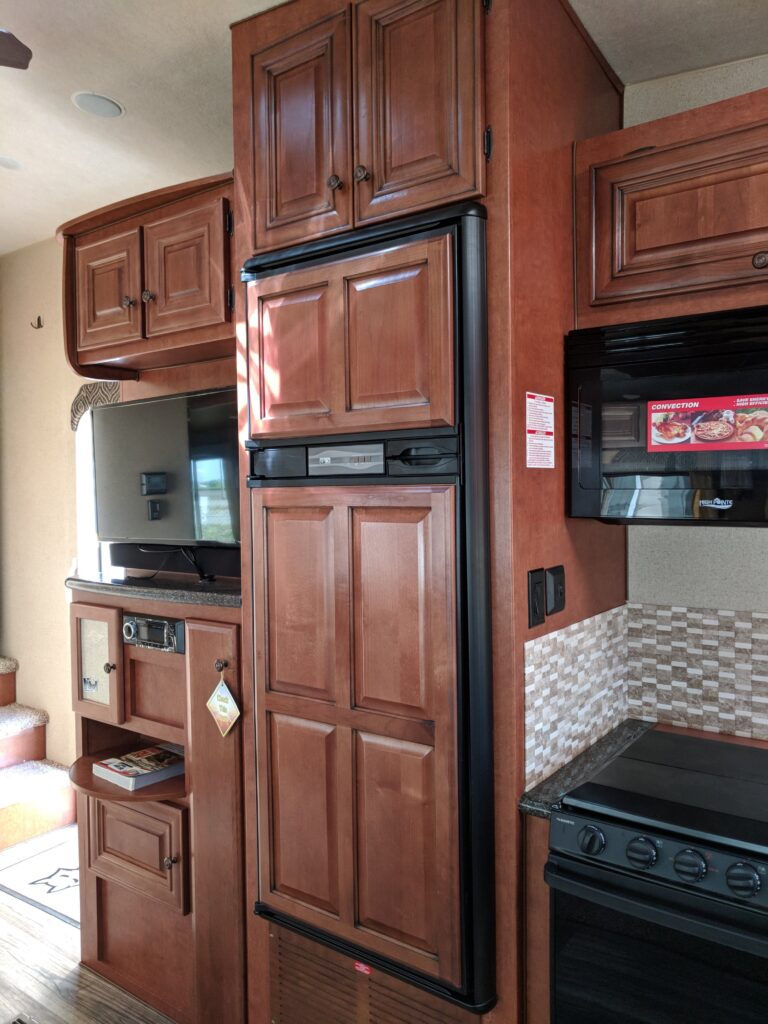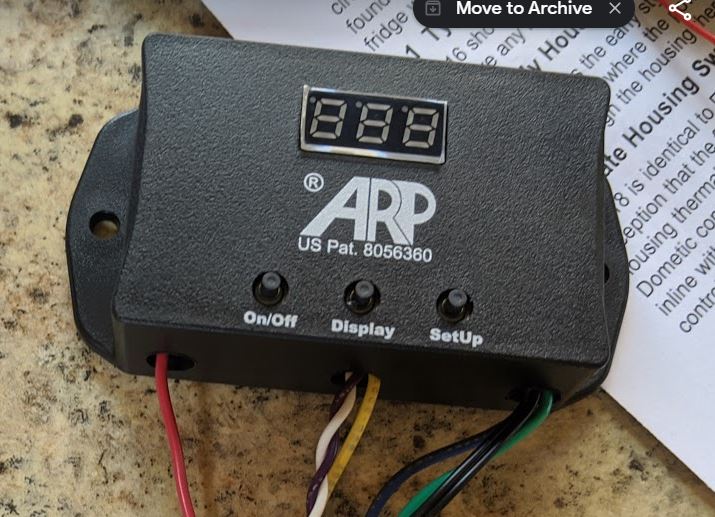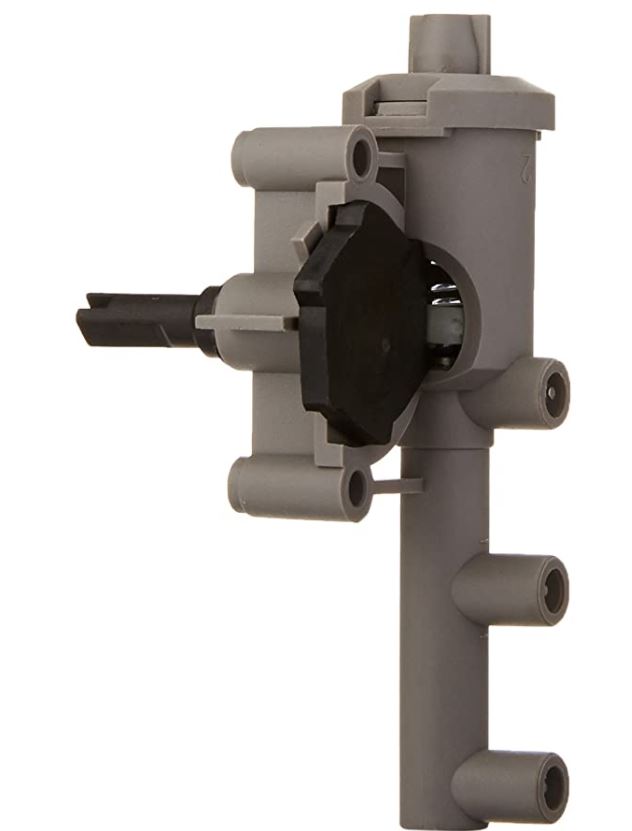Not many things will get the RV wizards on the internet fired up more than how to safely take care of and get effective use of an RV Refrigerator. A clearly critical component of an RV is stepping up from tent camping and an ice cooler to a more comfortable lifestyle in your outdoor experience. We’ll talk about the types of fridges out there, and then go into the care and feeding of absorption RV Refrigerators.
Types of RV Refrigerators
Traditional Absorption
RV’s have had Absorption style refrigerators for decades. These units replaced the very old literal “Ice Box” style where you had to keep it stocked with ice to stay cold. Usually the power for these units is either Propane (LP) or 120V AC electricity. This is the most common type of RV Refrigerator and the one we’ll be covering in the article.
Residential Refrigerators
These are starting to make a bigger dent in the market and are showing up in a lot of larger and higher end motorhomes and 5th wheels. They operate the same as the fridge in your home with a 120V AC power compressor to keep cool. They use the most electricity of all the types and if you camp without power hook ups it will take a generator or fairly sizable solar setup to keep your batteries charged. However, if you camp with hook up all the time they can be a great option.
DC Compressor Refrigerators
Often referred to as Danfoss, these units use an energy efficient 12V DC powered compressor. In operation they are similar to a residential unit and work very well without the quirks of an Absorption fridge. But they still draw considerable power which should be taken into account if you camp without power hookups.
I use a small portable one of these to replace my ice chest and to keep my beer cold and handy from the outside of the camper. It pulls about 5Amps when running and probably has a 50% run cycle. But, even with 400W of solar and my 2xGC2 batteries, several cloudy days in a row and I’ll need to shut it down to conserve my battery power.
To see how this little guy affects my typical boondocking, check out Intro to Boondocking and go to the Electrical section.
Absorption Refrigerators
How does it work?
As I mentioned before, they work NOTHING like the fridge in your home. They use a chemical and heat process to circulate, evaporate and condense liquids, generating cold during the 2nd evaporation phase. Yep, it sounds crazy. At the most basic level, a heating element (propane or 120V) heats up a solution of water and ammonia. The ammonia evaporates and is pushed up into a condenser where it….. ah heck, here is an expert to tell you how it works.
It is fascinating to me and this absorption technology has been around since the early 1900’s. It is well proven and when done correctly works very well.
Efficiency
When we talk here about efficiency we may not be talking about actual energy efficiency but instead on the primary power source. The largest amount of energy you have available when camping is Propane (LP). Propane has about 91,000 BTU’s in a gallon. That a lot of energy and under typical use a fridge could run for weeks on a single 20lb BBQ sized propane tank. My little and efficient Danfoss cooler would kill my batteries in just a few days.
Most newer absorption fridges use a very small amount of 12V DC power to run the circuit boards – but some of the older units had a pilot light and didn’t use any DC power at all.

You can see from the label from my camper that this 10 cubic foot Norcold pulls a maximum of 1.2A DC and 1420 BTU’s per hour. On the DC side I know (cuz I measure it) that my camper with everything off except the fridge has a total draw of about 0.7A – – that includes all the circuit boards like water heater, propane/smoke detectors, etc. I suspect the 1.2A is only when it is lighting the propane.
On the propane side, when running it pulls 1420 BTU/hour. While you can’t say for sure as there are many factors, it should be safe to say it will only run 8 hours in a 24 hour day. 1420*8 = 11,360BTU. Or about 1/9th of a gallon of propane per day.
Challenges and Remedies
Level
If you look at the video above, you can see that gravity is a key component in keeping the pumping action and flow going as it should. Your fridge needs to be relatively level when in operation to prevent the flow from stopping and the unit from over heating. The Manual on mine says 6 degree’s front to back and 3 degree’s side to side of tilt is acceptable and should not be exceeded. I have a lot of info on this and the safety implications in my write up on the ARP Fridge Defend.
Airflow
The airflow on these units is controlled by the heat – as the heat rises it pulls air in the bottom vent and exhausts it out of the top. It is absolutely critical that the air flows through the back of fridge correctly to remove built up heat. If you don’t have good airflow over the condenser, the fridge will not cool well and you are likely to be unhappy with the performance.
The most important factor is that the unit is installed correctly. The installation manuals are very clear on clearances and specification for the installation to ensure the airflow is proper. This becomes doubly important on fridges that are “side” vented – IE: where the top vent is on the side of the RV instead of on the roof – typically this install method is only used when the fridge is mounted in a slide and thus cannot vent out of the roof.
Airflow problems are usually remedied by fixing the camper manufacturers improper installation by installing baffles or insulation. That and by adding fans to move air in through the bottom and out the top of the outside fridge compartment.
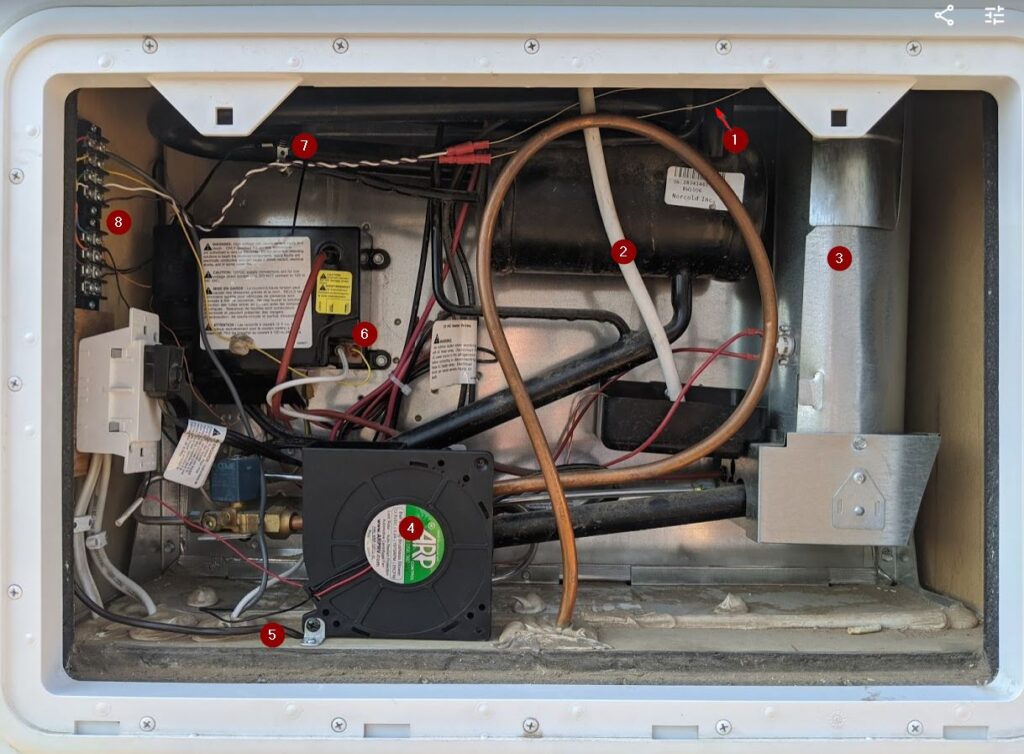
Airflow on the interior of the fridge is important too. Without it the bottom tends to get VERY cold and will freeze things like lettuce. I was lucky as when we bought our first camper – they owner was getting out of the RV’ing game due to health reasons. He included all his RV specific gadgets and gizmo’s as he wasn’t going to need them anymore. One of those was a fan for the inside of the fridge that ran off of D cell batteries. I used those for years, but with the install of the Fridge Defend I gained an easy way to not have to worry about batteries anymore. Without the Fridge Defend I’d probably install something like this, and power it off the camper batteries.
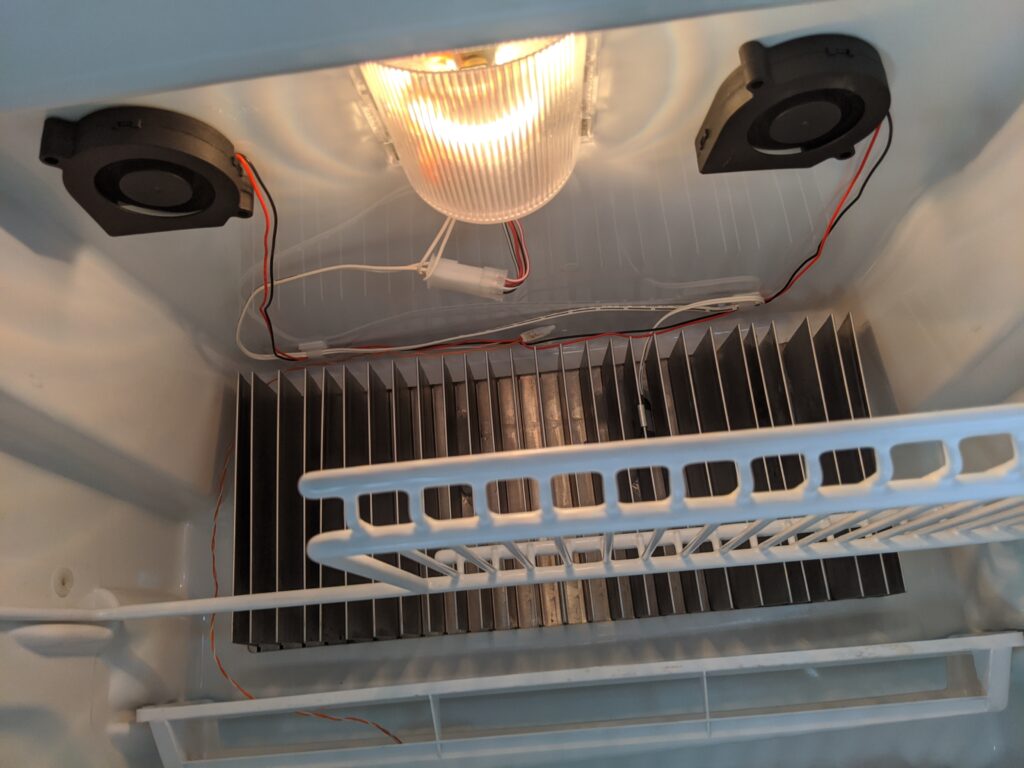
Efficiency
Absorption fridges do not generate as much cold as fast as their compressor based brethren. You need to turn them on well in advance (24 hours) of when you need to use them and know that even if it is fully cooled down if you load it up with a bunch of warm food and beverage, it will take a LONG time to cool back down to the desired temperature.

Yeah, it was friggin’ cold and snowing on that trip Feb 2021!
Many folks, myself included, have a wireless thermometer in the fridge compartment to keep an eye on how things are cooling. I use this cheap and functional unit to watch not only the temp inside the fridge, but also outside and interior temps. It also has high/low alarms and remembers high and low maximums which is handy to know how cold it got last night!
Cooling on the road
This will fire up some members of the RV community. They insist that it is dangerous to leave the fridge running on propane while driving and ESPECIALLY while fueling up the camper at a gas station. All of life carries some risk, but I consider this risk to be minimal..
The manual on the fridge makes no mention of not using the unit while moving or if in excessive wind conditions. Thousands of us have been doing this for decades with no ill effects.
The manual does talk about not storing gasoline near the refrigerator – and goes into more detail in that flammable things, including gasoline, should not be stored in the outside compartment of the fridge. Yep – that makes a hell of a lot of sense.
What doesn’t make since to me is worrying about turning off the fridge when going to a gas station. If the gasoline fumes are concentrated enough by the time they drift over to the fridge you have a MUCH bigger problem at that station. For example, have you ever looked at your car’s starter when you crank the engine? Yep – sparks – often a lot of them. Yet cars and gas stations are not blowing up around the country every day – or very often at all. PLEASE: Do what makes you feel safe – I’m just sharing my opinion and reasoning here.
Fires
This is a real concern. While RV fires are not super common (I can’t find any hard statistics) but when they do occur they are often devastating. In addition the fridge is often identified as the source of the fire. While the risk isn’t great, it is real and something you should be aware of. This is why, in an overabundance of caution, I installed the ARP Fridge Defend.
PLEASE – if you have a fire in your RV from any cause, get out FAST. They are notorious for burning up quickly. Know how to use your emergency exits and be ready to do so.
System Failure/leak
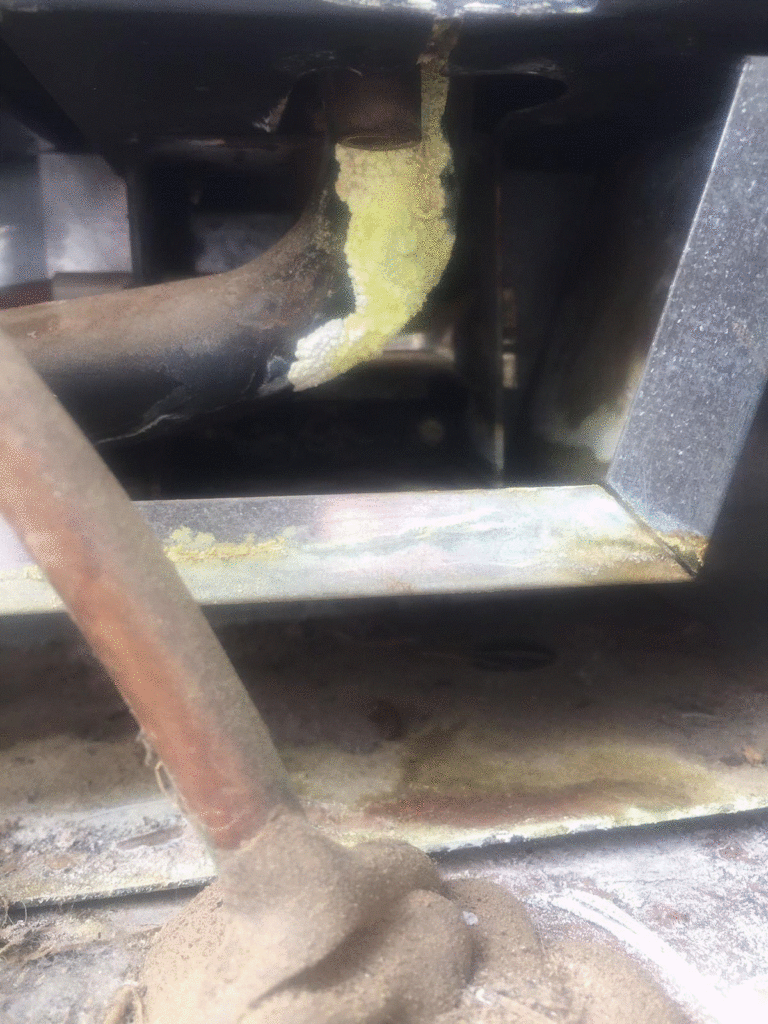
The cooling unit on an absorption fridge is a closed and sealed system. If that system doesn’t remain closed (IE: leak, crack, etc) then the entire cooling unit will have to be replaced. The most common evidence this has happened is either the smell of ammonia, or yellow residue as in the above picture. There is no practical way to repair the cooling unit.
Many people seem to have good luck with replacement units from JC Refrigeration. These guys make not only absorption replacement fridge guts, but also a Danfoss 12V DC powered replacement for most makes and models of fridges and they get great reviews.
Summary
As you have learned the absorption refrigerator is a different kind of beast. For mine and many other peoples use it is the best fridge solution. We primarily boondock, sometimes up to 10 days or more off the grid using just our solar to keep things up and running. The absorption fridge has not let us down yet and keeps our food and beverages nice and cool (or frozen.)
If you always have power hookup, have a lot of solar or run a generator for hours every day, you might be happier with one of the compressor based solutions. The Danfoss models in particular are interesting and newer on the RV market. Residentials are power hogs, but if you’re on the grid, it probably doesn’t matter.
Hopefully this have given you some useful information about the types of fridges on the market as well as the advantages and disadvantages of the absorption refrigeration method. If you want to know more, or have some quesitons about your particular use can, hop on over to the Member Community and ask away – ton of friendly folks over there ready to help!

